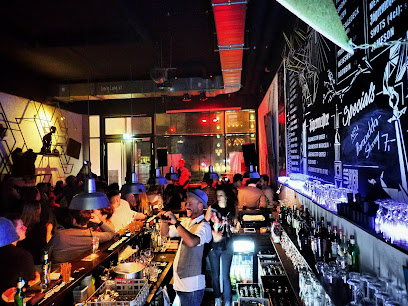
Hamburg Town Hall: A Symbol of Hanseatic Pride
Discover Hamburg's majestic Town Hall: A Neo-Renaissance masterpiece, a symbol of Hanseatic pride, and the heart of Hamburg's vibrant history and self-governance.
The Hamburg Town Hall, or Rathaus, is an architectural marvel and a powerful symbol of Hamburg's rich history and independence. Built in Neo-Renaissance style in the late 19th century, it stands as a testament to the city's wealth and civic pride. Housing the city's senate and parliament, the Rathaus boasts 647 rooms filled with stunning art and intricate details. Visitors can explore its opulent interiors through guided tours, discovering the Grand Hall, the Emperor's Hall, and the Phoenix Hall, each telling a unique story of Hamburg's past. Located in the heart of the city on Rathausmarkt, it's easily accessible and a must-see for anyone visiting Hamburg.
A brief summary to Hamburg Townhall
- Rathausmarkt 1, Hamburg, Hamburg-Mitte, 20095, DE
- +4940428312064
- Visit website
Local tips
- Take a guided tour to fully appreciate the Rathaus's history, architecture, and significance. Tours are available in German and English.
- Visit the Rathausmarkt during the Christmas season to experience the magical Christmas market.
- Combine your visit with a stroll around the nearby Alster Lake and explore the charming Alsterarkaden.
- Check the Rathaus's event calendar for concerts, exhibitions, and other public events.
- Visit early in the morning to avoid crowds and have a more peaceful experience.
Getting There
-
Public Transport
The Hamburg Town Hall is easily accessible via public transport. The closest U-Bahn stations are Rathausmarkt (U3 line) and Jungfernstieg (U1, U2, and U4 lines). Several bus lines also stop at Rathausmarkt. From Jungfernstieg, walk towards the Alster lake and you'll reach Rathausmarkt in about 5 minutes. A single ride ticket on the U-Bahn or bus within the Hamburg city area ( zones) costs approximately €2.50.
-
Walking
If you are already in the city center, such as near the Speicherstadt or the Jungfernstieg promenade, walking to the Hamburg Town Hall is a pleasant option. From Speicherstadt, head northwest towards the Deichtorhallen and continue towards the Rathausmarkt. From Jungfernstieg, simply walk along the Alsterarkaden towards the Rathausmarkt. The area around the Town Hall is pedestrian-friendly.
-
Taxi/Ride-Share
Taxis and ride-sharing services like Uber are readily available throughout Hamburg. A short taxi ride from Hamburg Hauptbahnhof (Central Station) to the Town Hall will cost approximately €10-€15, depending on traffic.
-
Driving
If driving, be aware that parking in the immediate vicinity of the Town Hall is limited and can be expensive. Several parking garages are located nearby, such as the Q-Park City-Parkhaus, with hourly rates around €3-€4 and a daily maximum of €25. Consider using park-and-ride options further from the city center and taking public transport for the final leg of the journey.
Discover more about Hamburg Townhall
Iconic landmarks you can’t miss
Hygieia Fountain
0.0 km
Discover the Hygieia Fountain in Hamburg's City Hall: a symbol of resilience and a tribute to the city's triumph over the cholera epidemic of 1892, embodying Hamburg's enduring spirit.
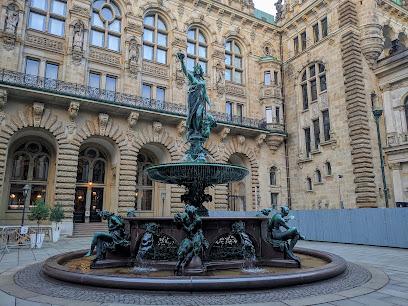
Otto Liss Gedenktafel
0.2 km
A poignant memorial in Hamburg honoring Otto Liss, a worker who died building the U-Bahn, serving as a reminder of the human cost of progress and the city's history.
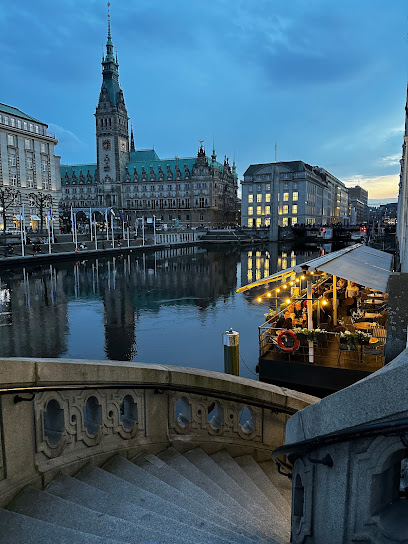
Alte Post
0.3 km
Explore the Alte Post in Hamburg: a historic landmark blending stunning architecture with a vibrant shopping experience in the heart of the city's Passagenviertel.
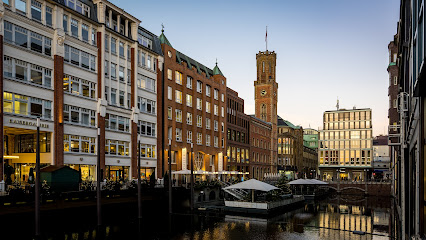
Archaeoscope Hammaburg
0.3 km
Journey back to the 9th century at the Archaeoscope Hammaburg, where virtual reality unveils the origins of Hamburg on the historic Domplatz, the site of the Hammaburg fortress.
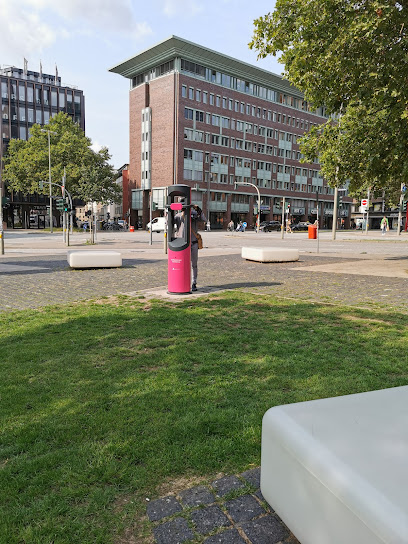
Hulbe house
0.3 km
Discover the Hulbe House in Hamburg: A stunning example of Dutch Renaissance architecture, built in 1910, showcasing intricate details and a rich history on Mönckebergstraße.
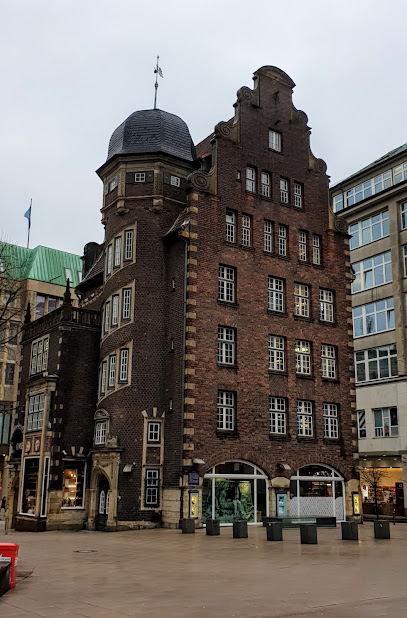
City of Hamburg Germany
0.4 km
Explore Hamburg, Germany's vibrant port city: Discover maritime history, modern architecture, and a thriving cultural scene in this captivating metropolis.
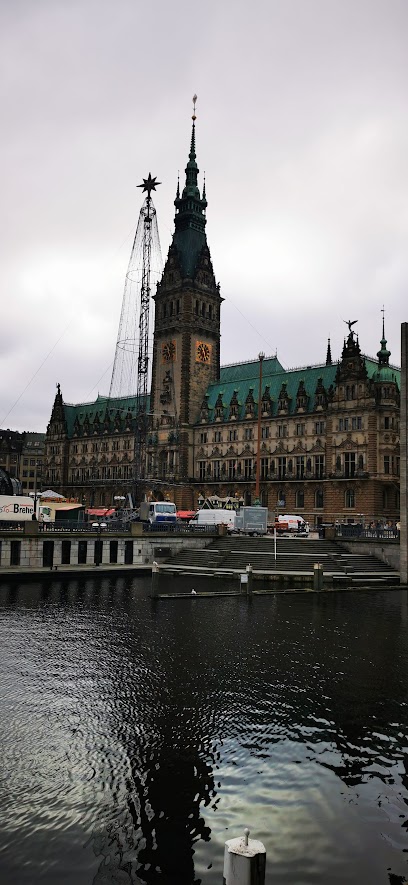
Mattentwiete 2
0.6 km
Discover Hamburg's maritime soul from Mattentwiete 2: Gateway to the UNESCO World Heritage Speicherstadt, a captivating blend of history, architecture, and culture.
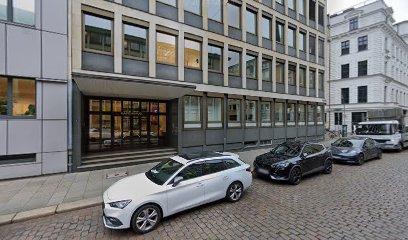
Deichstraße
0.6 km
Discover Hamburg's oldest street, a picturesque lane of meticulously restored 17th-19th century houses along the Nikolaifleet, offering a glimpse into the city's Hanseatic past.

Kornhausbrücke
0.6 km
Cross the historic Kornhausbrücke in Hamburg's HafenCity, connecting the Speicherstadt with stunning views of the Zollkanal, offering a glimpse into the city's maritime past.

Kleines Dock
0.6 km
Discover Hamburg's maritime heart at Kleines Dock: historic Deichstraße, Hanseatic architecture, waterfront charm, and culinary delights await near the Speicherstadt.
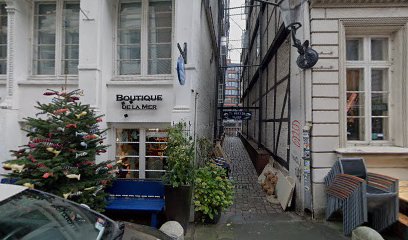
Brooksbrücke
0.7 km
Experience the historical charm and stunning views at Brooksbrücke, a must-visit bridge in Hamburg that connects culture and beauty.
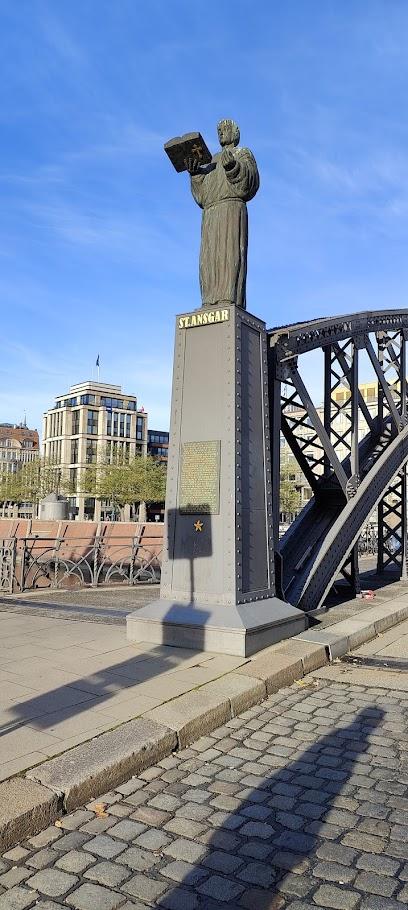
Hohe Brücke
0.7 km
Cross the historic Hohe Brücke in Hamburg's Old Town for stunning canal views and a glimpse into the city's rich maritime past, connecting you to the heart of Hamburg.
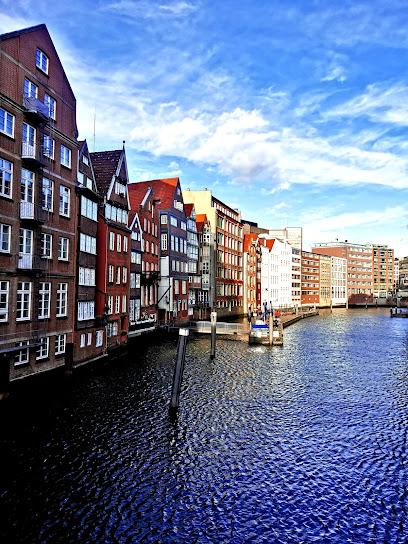
House of Seafaring
0.7 km
Explore Hamburg's maritime heritage at the House of Seafaring, a historical landmark showcasing the city's rich nautical past and stunning architecture in the heart of Hamburg-Mitte.
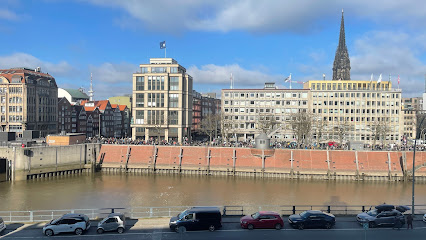
Hohe Brücke 2
0.7 km
Discover Hamburg's maritime history and architectural beauty at the Hohe Brücke, a picturesque bridge offering stunning views of the Nikolaifleet and the historic Deichstraße.

Hummel memorial
0.7 km
Discover the legend of Hans Hummel at this charming memorial in Hamburg-Mitte, a tribute to a beloved water carrier and a symbol of the city's unique cultural heritage.

Unmissable attractions to see
"Gesellschafttsspiegel Dreieck", Skulpturen von Olafur Eliasson
0.1 km
Explore the mesmerizing sculptures of Olafur Eliasson at Gesellschafttsspiegel Dreieck, a unique art installation in the heart of Hamburg.
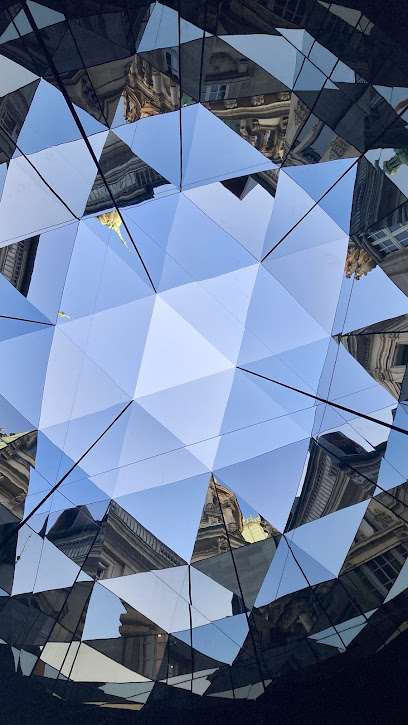
Town Hall Market
0.1 km
Experience the vibrant atmosphere, rich culture, and delightful treats at Hamburg's historic Town Hall Market, a must-visit destination for tourists.
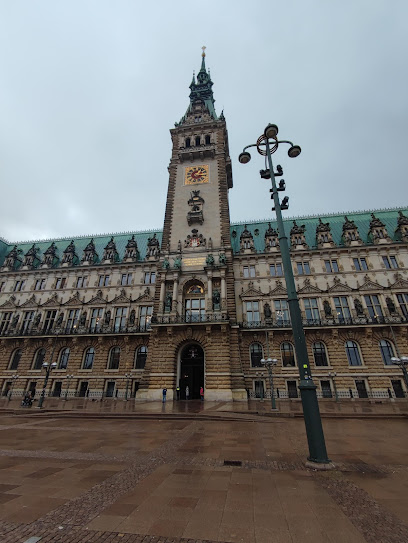
Rathausmarkt
0.1 km
Experience the vibrant culture and history of Hamburg at Rathausmarkt, the city's bustling town square surrounded by stunning architecture and local charm.

Heinrich Heine Monument
0.1 km
Discover the Heinrich Heine Monument in Hamburg, a striking tribute to the famous poet amidst the city's vibrant historical landscape.

Bucerius Kunst Forum
0.1 km
Explore Bucerius Kunst Forum, Hamburg's premier art museum, showcasing a rich tapestry of exhibitions that inspire and engage visitors of all ages.

Börsentag Hamburg
0.1 km
Explore the fascinating world of finance at Börsentag Hamburg, an engaging exhibition center in the heart of one of Germany's vibrant cities.
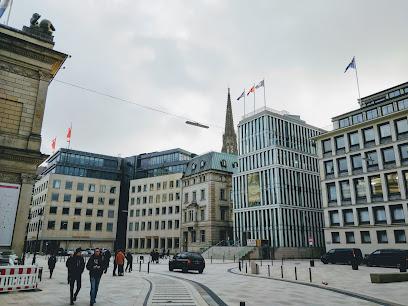
Denkmal für die Gefallenen beider Weltkriege
0.1 km
Explore the Memorial for Both World Wars in Hamburg, a poignant tribute surrounded by serene landscapes, perfect for reflection and remembrance.

Schleusenbrücke
0.1 km
Explore the iconic Schleusenbrücke in Hamburg, a blend of historical charm and modern engineering with stunning waterfront views.

Alster Arcade
0.2 km
Explore the historic Alster Arcade in Hamburg, where stunning architecture meets vibrant shops and cafes along the picturesque canals.
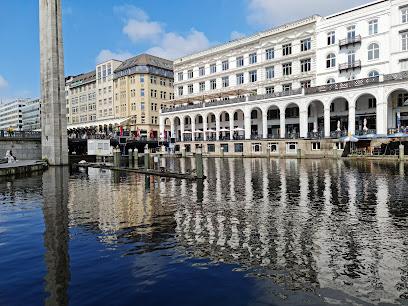
Mellinpassage
0.2 km
Experience the charm of Mellinpassage, Hamburg's elegant shopping center featuring high-end boutiques, cafés, and art galleries in a stunning architectural setting.
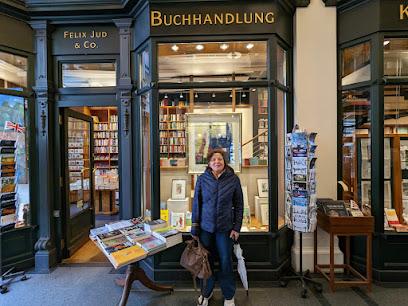
Reesendamm bridge
0.2 km
Explore the scenic Reesendamm Bridge in Hamburg, a serene spot for leisurely walks and stunning views of the city's waterfront.
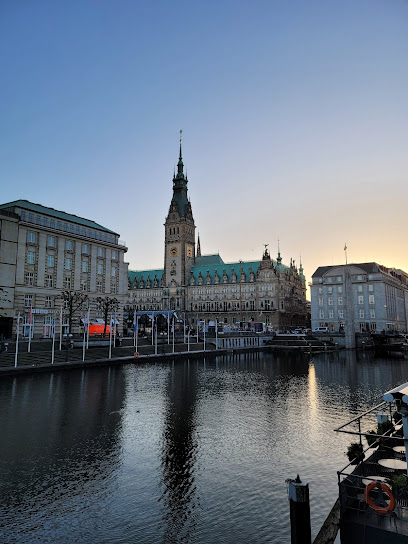
Bleichensteg
0.2 km
Explore the picturesque Bleichensteg in Hamburg, a tranquil oasis of beauty, history, and culture perfect for leisurely strolls and stunning photography.
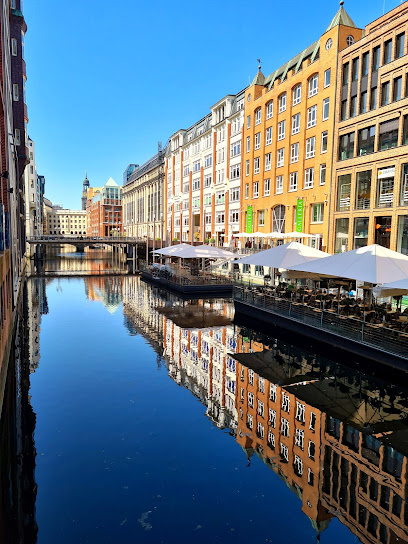
Trostbrücke
0.3 km
Discover Trostbrücke, Hamburg's historical bridge offering stunning views and a vital connection to the city's rich maritime heritage.
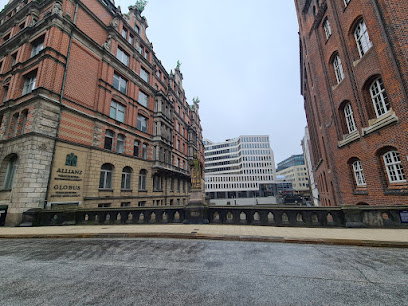
Laeiszhof
0.3 km
Explore Laeiszhof, a historical landmark in Hamburg, where architectural beauty meets rich cultural heritage in the heart of the city.
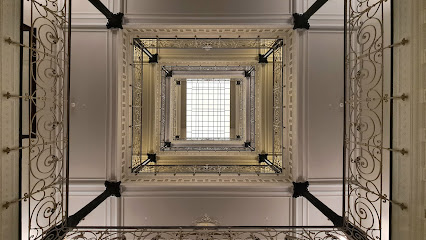
St. Peter's Church
0.3 km
Explore the grandeur of St. Peter's Church in Hamburg, a historic Protestant church with breathtaking architecture and stunning city views.
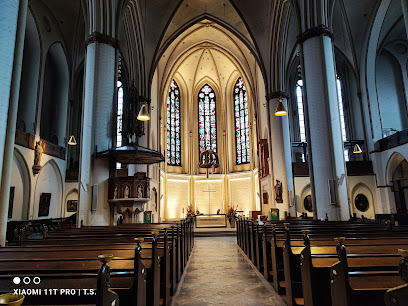
Essential places to dine
Restaurant Parlament Hamburg
0.1 km
Discover authentic German cuisine at Restaurant Parlament in Hamburg, where tradition meets modern dining in a historic setting.
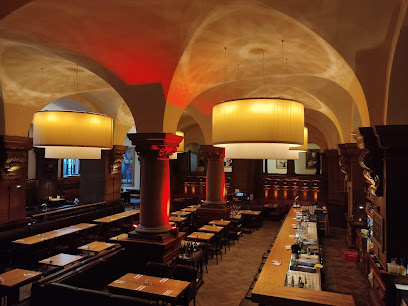
I Vigneri Osteria Enoteca
0.2 km
Experience authentic Marche cuisine at I Vigneri Osteria Enoteca in Hamburg, where exquisite dishes meet an extensive wine selection.

Le Plat du Jour
0.2 km
Discover authentic French cuisine at Le Plat du Jour in Hamburg – where every dish tells a story of culinary excellence.

Wloka‘s
0.2 km
Savor authentic German Hausmannskost at Wloka's in Hamburg-Mitte - A must-visit for food lovers seeking traditional flavors.
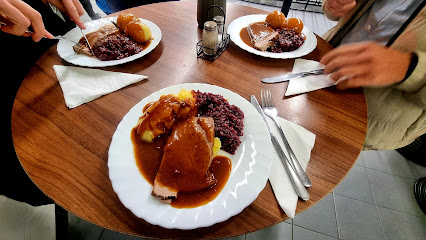
Restaurante Español Picasso
0.2 km
Experience authentic Spanish cuisine at Restaurante Español Picasso in Hamburg, where every dish tells a story from the Mediterranean.

brasserie TORTUE
0.4 km
Experience exquisite French dining at Brasserie TORTUE in Hamburg—where culinary artistry meets elegant ambiance.

chez l'ami TORTUE
0.4 km
Experience exquisite French cuisine at Chez l'ami TORTUE in Hamburg – where culinary tradition meets modern elegance.
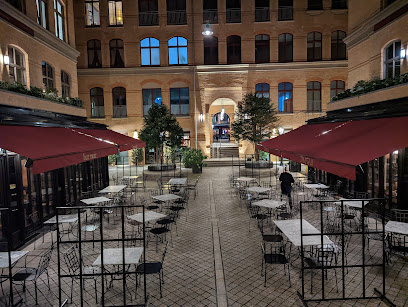
THE DINING RooM
0.5 km
Discover the exquisite flavors of American, French, and German cuisine at The Dining RooM in Hamburg - a fine dining experience like no other.
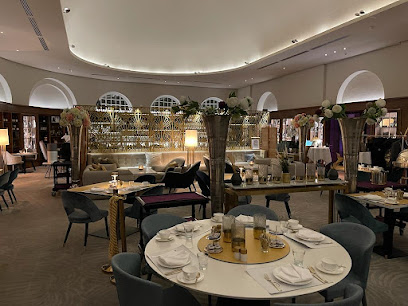
Restaurant Perle
0.5 km
Discover Hamburg's culinary treasure at Restaurant Perle, where local flavors meet modern elegance in every dish.
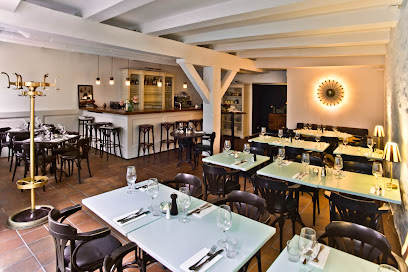
Restaurant Rialto
0.5 km
Experience the flavors of Hamburg at Restaurant Rialto - where tradition meets modern cuisine in a charming atmosphere.

Kornhauskeller
0.5 km
Experience the best of Mediterranean and Middle Eastern cuisine at Kornhauskeller in Hamburg's vibrant bistro scene.
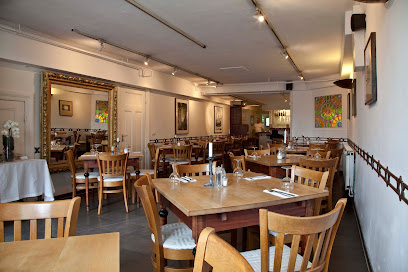
NIKKEI NINE
0.6 km
Experience a unique blend of Japanese and Peruvian cuisine at NIKKEI NINE in Hamburg, where every dish tells a story.
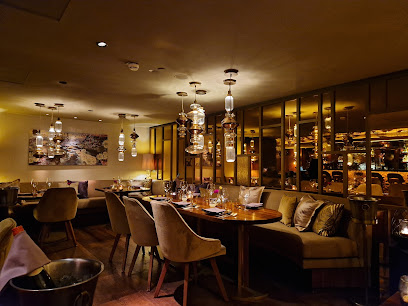
Restaurant Kartoffelkeller
0.6 km
Savor authentic German flavors at Restaurant Kartoffelkeller in Hamburg – a delightful culinary experience awaits!
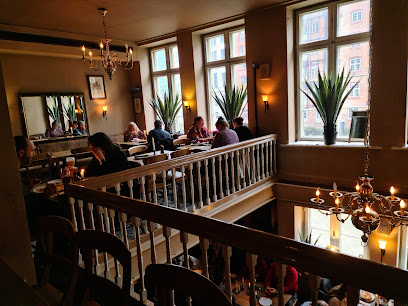
Deichgraf Restaurant
0.6 km
Experience exquisite dining at Deichgraf Restaurant in Hamburg—where fresh local ingredients meet culinary artistry.
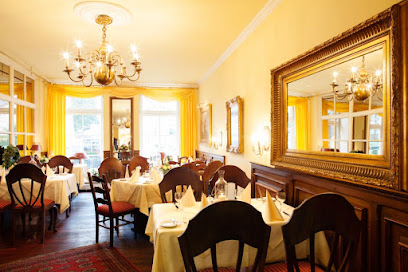
Restaurant Brook
0.6 km
Experience exquisite French and Mediterranean cuisine at Restaurant Brook in Hamburg – where every dish tells a story.

Markets, malls and hidden boutiques
La plus belles rue
0.2 km
Explore Neuer Wall, Hamburg's luxurious shopping street, where high-end brands meet local craftsmanship in a picturesque setting.
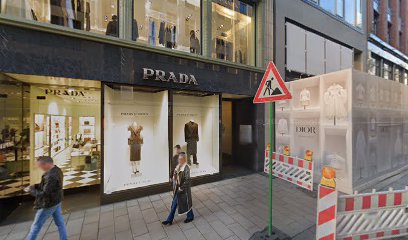
Gudrun Sjödén - concept store Hamburg
0.2 km
Explore Gudrun Sjödén's concept store in Hamburg for vibrant women's fashion, unique accessories, and a touch of sustainable style.
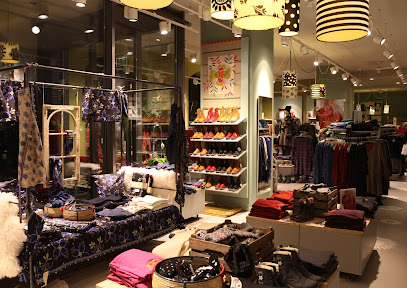
PRADA Hamburg Neuer Wall Store
0.2 km
Explore the elegance of PRADA at Neuer Wall in Hamburg, where luxury fashion meets sophisticated style in a stunning retail environment.

Montblanc Boutique Hamburg - Neuer Wall
0.2 km
Experience the epitome of luxury at Montblanc Boutique Hamburg, offering exquisite jewelry, leather goods, and fine stationery in a sophisticated setting.
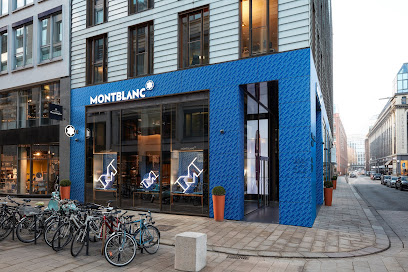
Europa Passage
0.3 km
Discover the vibrant shopping experience at Europa Passage in Hamburg, featuring over 120 stores and a variety of dining options.
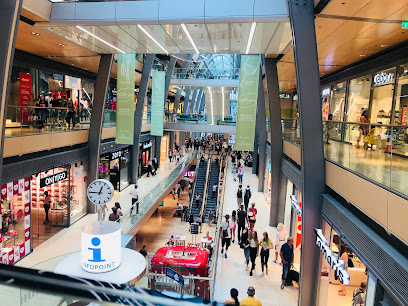
Elbenwald
0.3 km
Experience the magic of Elbenwald, Hamburg's ultimate destination for fantasy gifts, clothing, and collectibles for every fan.

Alsterhaus
0.3 km
Discover the essence of luxury shopping at Alsterhaus, Hamburg's premier department store, offering fashion, fragrances, and fine dining experiences.
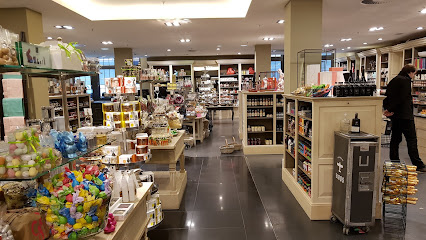
American Vintage
0.3 km
Explore the latest trends and unique styles at American Vintage, a chic clothing store in the heart of Hamburg, perfect for all fashion enthusiasts.
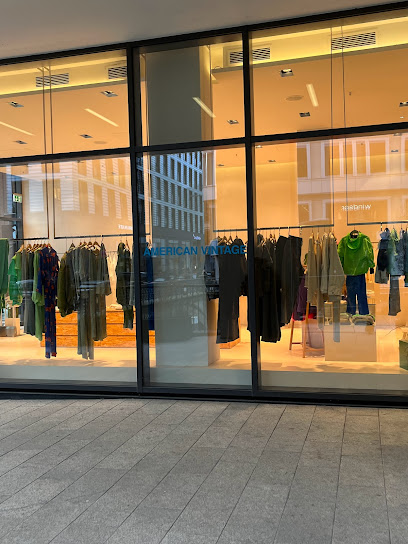
CHANEL BOUTIQUE HAMBURG
0.3 km
Explore the luxury and elegance of CHANEL Boutique Hamburg, where timeless fashion meets exquisite craftsmanship in a stunning shopping experience.
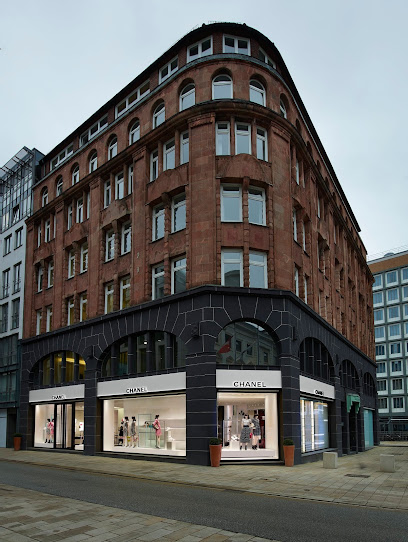
GALLERIA
0.3 km
Discover Galleria Hamburg: A luxurious shopping mall blending high-end fashion, delicious dining, and an elegant atmosphere in the heart of the city.
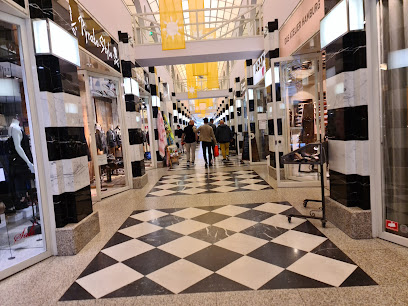
C'N'C
0.3 km
Explore the latest fashion trends at C'N'C, Hamburg's chic clothing store on the stunning Jungfernstieg promenade.
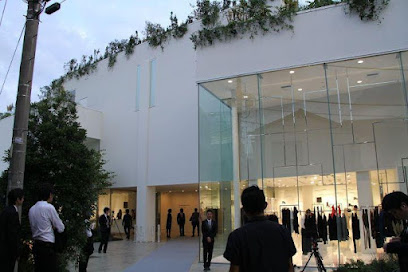
hessnatur Store Hamburg
0.4 km
Explore the hessnatur Store in Hamburg for sustainable fashion, offering stylish clothing and accessories for men, women, and children.
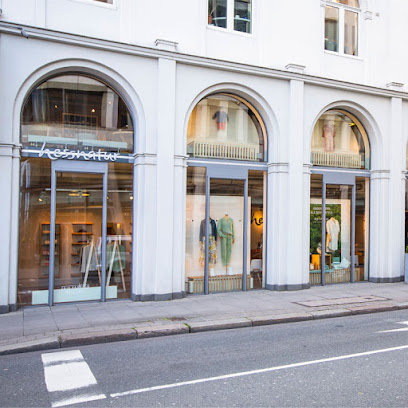
Der Nordische Stil
0.4 km
Explore Der Nordische Stil in Hamburg for exquisite Nordic gifts and fashion, showcasing the essence of Scandinavian design and craftsmanship.
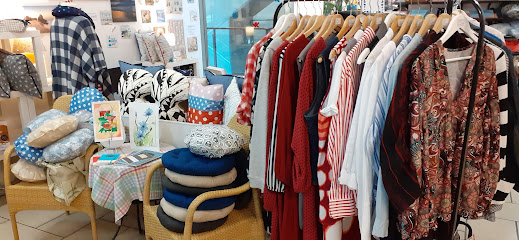
GALERIA Hamburg Mönckebergstraße
0.4 km
Discover the heart of shopping in Hamburg at GALERIA Hamburg Mönckebergstraße, where retail therapy meets vibrant city life.
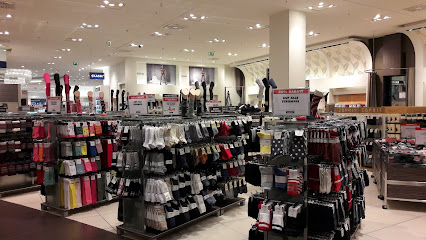
wasted hour - concept store
0.4 km
Explore Wasted Hour in Hamburg - a concept store that redefines fashion with unique designs and an inspiring atmosphere.
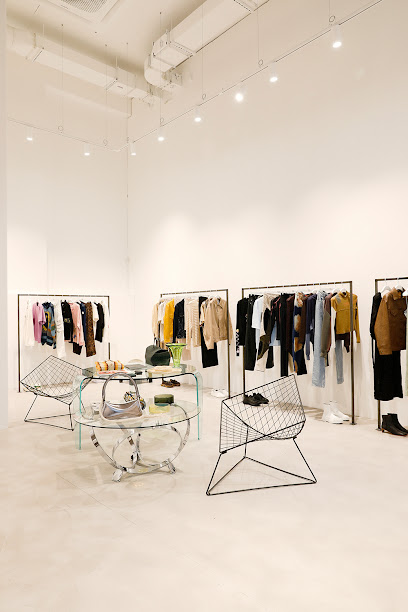
Essential bars & hidden hideouts
Paddy's Bar
0.1 km
Discover the vibrant atmosphere of Paddy's Bar, Hamburg's favorite Irish pub, offering hearty meals, a wide drink selection, and live music.
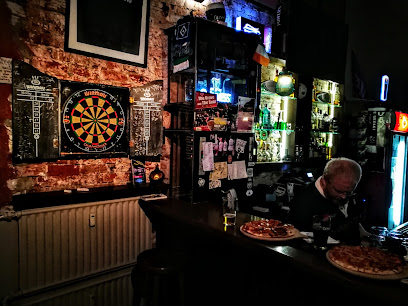
Le Lion • Bar de Paris
0.2 km
Discover the luxury of Le Lion • Bar de Paris, Hamburg's premier destination for exquisite cocktails and elegant ambiance.
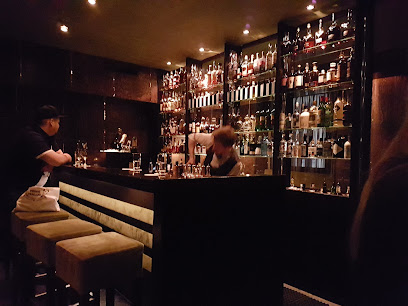
Ba Nomu | Bar
0.2 km
Discover Ba Nomu, Hamburg's cocktail haven, where creativity meets taste in a vibrant, stylish atmosphere perfect for unforgettable nights.

Irish Pub in the Fleetenkieker
0.2 km
Immerse yourself in the lively spirit of the Irish Pub in the Fleetenkieker, Hamburg, where great food, drinks, and live music await.
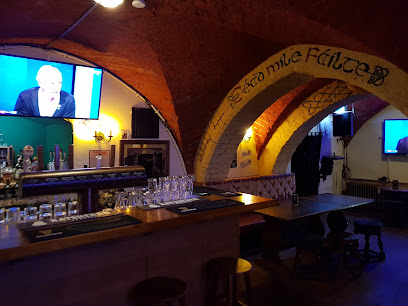
Gugu Bar
0.2 km
Experience the vibrant nightlife of Hamburg at Gugu Bar, where eclectic decor meets an extensive drink menu in a lively atmosphere.
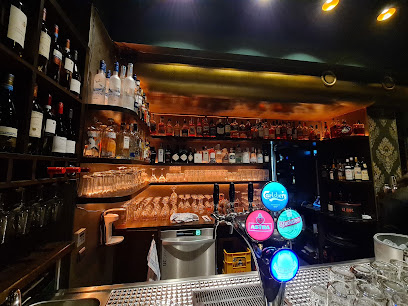
Liquid Garden - Cocktailbar
0.6 km
Discover Liquid Garden, Hamburg's vibrant cocktail bar where creativity and flavor blend for unforgettable nights and unique drinks.

CIU` DIE BAR
0.6 km
Discover CIU` DIE BAR in Hamburg for innovative cocktails, a stylish atmosphere, and an unforgettable nightlife experience.

The Bohemian - Bar
0.6 km
Discover The Bohemian, Hamburg's premier cocktail bar, known for its signature drinks and vibrant nightlife in the heart of the city.
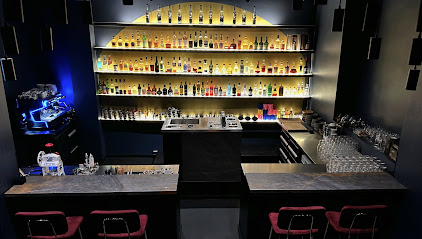
Meyer Lansky's
0.6 km
Discover the energetic spirit of Hamburg at Meyer Lansky's, where exquisite cocktails meet a lively atmosphere for an unforgettable night out.
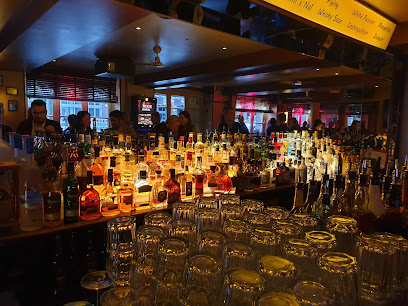
Whiskyplaza & Altstadt Restaurant am Fleet
0.7 km
Discover Hamburg's Whiskyplaza & Altstadt Restaurant, a culinary haven where fine dining meets an exquisite cocktail experience in a historic setting.
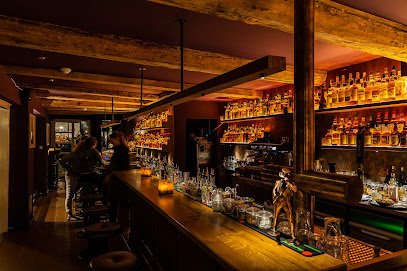
Central Congress
0.8 km
Experience the trendy ambiance and innovative drinks at Central Congress, Hamburg's must-visit bar that caters to every night owl.

Three Fingers Bar
0.8 km
Experience the vibrant nightlife of Hamburg at Three Fingers Bar, where stunning waterfront views meet expertly crafted cocktails.
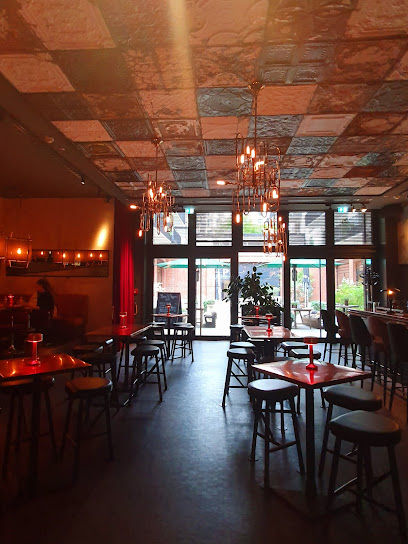
MOON 46
0.8 km
Discover the lively ambiance and exquisite cocktail selection at MOON 46, a must-visit bar in Hamburg's vibrant nightlife scene.
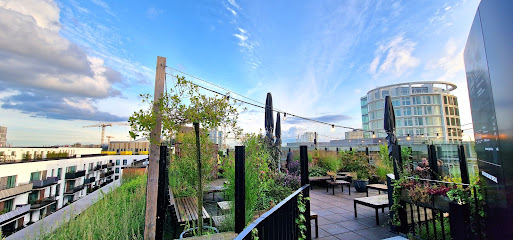
Tipsy Baker Bar Hamburg
0.8 km
Discover the best drinks and vibrant nightlife at Tipsy Baker Bar, Hamburg's favorite spot for cocktails and socializing.
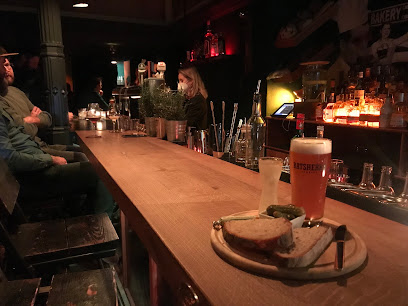
Club 20457
0.9 km
Experience Hamburg's vibrant nightlife at Club 20457, where art meets music in a lively bar setting.
